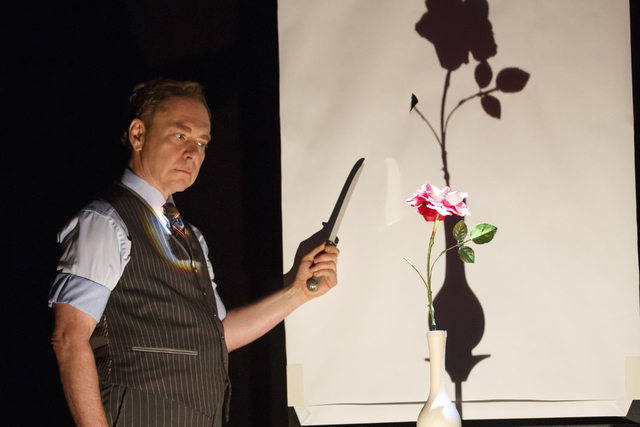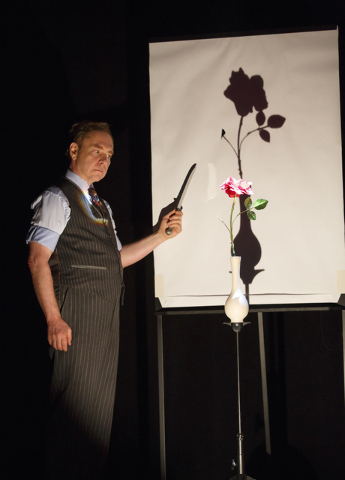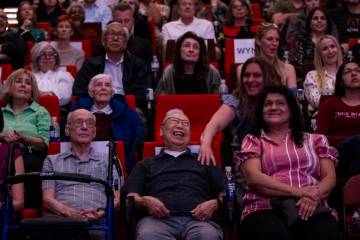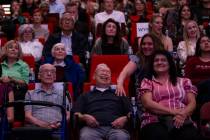Intellectual property intersects with show business
You marvel at the magic trick. You dance to the killer guitar riff. You laugh at the stand-up comic’s punch line or watch in awe as the chorus line moves as one.
That’s what you’re watching. What you’re also watching but don’t see is the complex legal infrastructure that underlies all of those things and helps to ensure that your favorite entertainers will not only enjoy the benefits of their creativity right now but also will be encouraged to come up with even more stuff for you to enjoy later.
The magician’s illusion, the musician’s song, the comic’s jokes and the choreographer’s steps all can be protected under an area of law called intellectual property. Although it’s similar to the way the law protects the authors of, say, printed books by copyright, applying intellectual property tools to the more ephemeral area of live entertainment can be complicated.
Anat Levy, who has practiced entertainment law in Los Angeles and Las Vegas, said the purpose of intellectual property law is to protect the work of artists, composers and others by giving them exclusive rights to their work and — in a benefit that spills over to society at large — giving them and other potential creators the incentive “to come up with new and novel things in society.”
The tools through which original works of entertainment can be protected from exploitation by others include copyrights, patents, and trade and service marks. Copyright, the most common protection, can be used to protect anything from a comedian’s monologue to the way in which a magician presents a trick.
For example, Teller, the nonloquacious half of Penn &Teller, filed suit in 2012 against a European entertainer who advertised for sale an illusion similar to “Shadows,” one of Teller’s signature illusions and an illusion for which Teller obtained U.S. copyright protection in 1983.
The illusion features Teller cutting petals off of the shadow of a rose as petals fall simultaneously from a real rose. Mark Tratos, a veteran Las Vegas entertainment attorney who represented Teller in the action, said that while a magic trick isn’t eligible for copyright protection, an illusion can receive copyright protection “if you integrate either choreography or pantomime.”
From a copyright perspective, “nobody cares about the mechanical specifics” — here, the mechanism by which the real petals were made to drop and the shadow petals fell. Rather, Tratos said, the relevant thing is “what does it look like? What is the thing that’s happening that makes you go, ‘Oh my goodness, How is that possible?’ That’s where the real magic is.”
The entertainer, according to Tratos, “came up with a version of the illusion in which he copied every movement of Teller in the illusion but used a different mechanism or methodology to cause the leaves and petals of the rose to fall off the stem as he attacked the shadow.”
“To this day, we don’t know exactly what his methodology was,” Tratos said, but “we don’t care about his methodology. What we didn’t want him doing is going out and encouraging everyone to easily perform the illusion, but repeating all of the choreography and very specific pantomime actions and steps that Teller had spent decades performing.”
The court eventually ruled in Teller’s favor and awarded damages of “over $400,000,” Tratos said. Although the judgment remains unpaid, it does serve as “a sword of Damocles, effectively hanging over his head” if he ever again should attempt to market the illusion.
Matthew Pruitt, a Las Vegas attorney whose practice includes intellectual property and entertainment law, noted that copyright “does not protect ideas,” but, rather, “the way that you express the idea.”
But, he added, “in general, any creative work is protectable, and it comes down to a lot of details on whether or not something is considered a creative work, and that has been worked out through courts or, in some places, put into statutes.”
A key point, however, is that, to obtain a copyright, the material — the performance of a joke or magic illusion, the steps of a choreographic routine, the music of a jam band — must be “reduced to a tangible form so (it) can be perceived with the naked eye or with the assistance of electronic devices,” Tratos said.
“It’s only when it’s reduced to a tangible form — either writing it down on paper or putting it on a voice recording or videotape — that I’ve then got something I can get a copyright on.”
The choreographer who works out a routine with his dancers and presents and fine-tunes the routine night after night before a paying audience? “I don’t have a copyright,” Tratos said. “The reason is, nowhere have my steps been reduced to tangible form, (or) embedded in some fashion that’s either readily visible with the naked eye or through electronic devices.”
Similarly, Tratos said, “I go to a comedy club and try my monologue out and see what works and what doesn’t work. I keep modifying my monologue night after night. I still don’t have a copyright because every night I do it, I do it live. So the steps have to be taken that I’ve written those jokes down in tangible form.”
Marketa Trimble, a professor of intellectual property law at the University of Nevada, Las Vegas Boyd Law School, noted that “the reason why we don’t provide protection for unfixed works is precisely the problem of evidence,” even though unfixed works can be protected by copyright in other countries.
Technically, the creator of a work holds the copyright on it from the time it is created. The problem is being able to prove the creator’s ownership if someone steals the work or otherwise infringes on the copyright. That’s why entertainers and artists would be wise to formally register original work with the U.S. Copyright Office.
That old trick of sending the work to yourself via registered mail and never opening the envelope? Although it might carry some value as evidence of creation, it’s not equal to copyright registration.
Registering online (www.copyright.gov) is “inexpensive (and) very easy to do,” Trimble said. “There’s a tutorial explaining how to do it. And, of all of the different types of intellectual property rights, this one is easiest to register.”
Yet, entertainers, magicians, singers, choreographers and comedians — and particularly aspiring entertainers just starting out — often don’t take the time to protect their work.
“Unfortunately, for young artists, it often comes as an afterthought,” Trimble said. “They’re excited about their art. They’re completely into what they do.”
Also, “they have that starting inventor mentality — you know, ‘I’m doing something that’s probably cool, but will never go anywhere, never become big,’ ” Trimble said. “Then when (attorneys) usually get to see them, it’s at the point where it has already gotten big.
“I guess what is good is that these kinds of questions have become much more important in the media. You hear much more about famous artists struggling with copyright-related issues. This sort of seems to help.”
Levy said that, beyond formal legal protections, there’s another way artists’ and entertainers’ work can be protected: Through peer pressure from other artists and entertainers.
“The most effective way the (creative) community tends to protect themselves is on the honor system,” Levy said. “Comedians know that they’re not supposed to steal other people’s jokes, and when they start to steal other people’s jokes, they become less popular in the comedian community. Magicians know they’re not supposed to reveal their tricks, and when they do, there are consequences within the community.”
“So that’s one of the most effective ways to police the market,” Levy said. “It’s not unlimited but it’s effective.”
Still, Levy recommends that artists and entertainers learn about the nuts-and-bolts measures of protecting their work. The Nevada State Bar’s entertainment law section has offered workshops on the topic, she said, and solid information is available online, through a college course and from the U.S. Copyright Office.
Ultimately, protecting artists’ and entertainers’ work is good not just for them, but for audiences, too.
The goal of intellectual property law is not just stopping the theft of intellectual property, Levy said, but also “encouraging others to make their own (art). We want to reward people who come up with original things and want to encourage others to also come up with things and not just poach on the ones who (already) did it.”
Read more from John Przybys at reviewjournal.com. Contact him at jprzybys@reviewjournal.com and follow @JJPrzybys on Twitter.





























